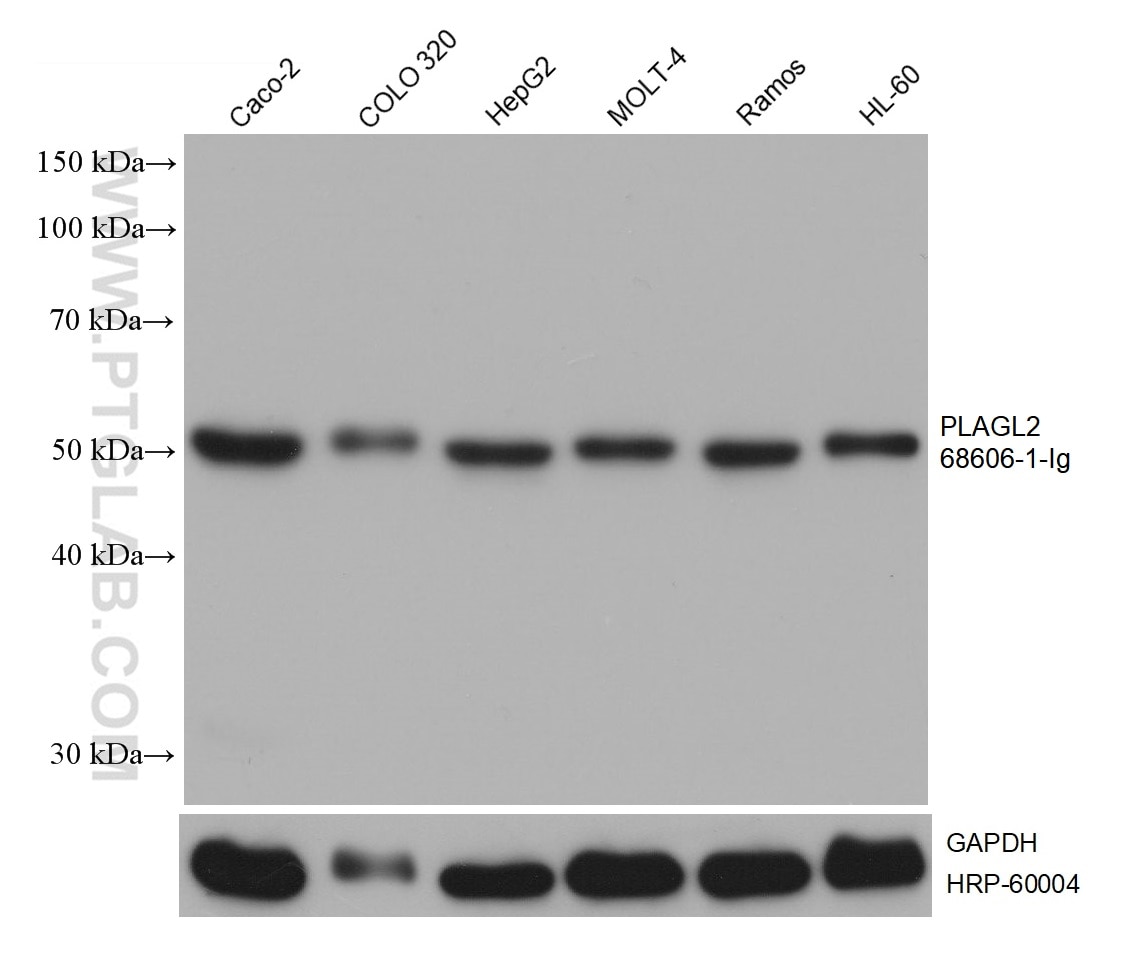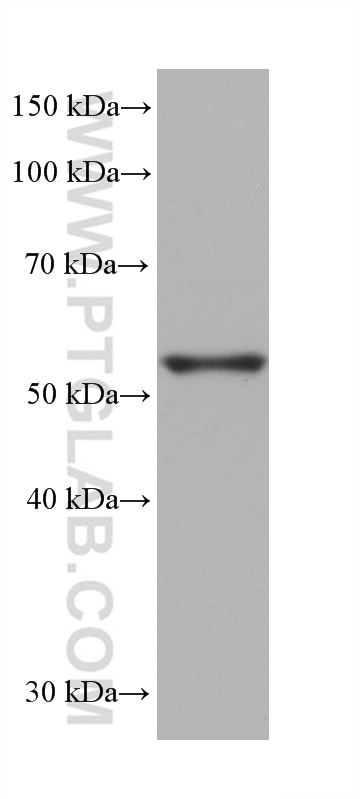PLAGL2 Monoklonaler Antikörper
PLAGL2 Monoklonal Antikörper für WB, ELISA
Wirt / Isotyp
Maus / IgG1
Getestete Reaktivität
human, Kaninchen
Anwendung
WB, ELISA
Konjugation
Unkonjugiert
CloneNo.
3C2E5
Kat-Nr. : 68606-1-Ig
Synonyme
Galerie der Validierungsdaten
Geprüfte Anwendungen
| Erfolgreiche Detektion in WB | Caco-2-Zellen, Kaninchenhodengewebe |
Empfohlene Verdünnung
| Anwendung | Verdünnung |
|---|---|
| Western Blot (WB) | WB : 1:2000-1:10000 |
| It is recommended that this reagent should be titrated in each testing system to obtain optimal results. | |
| Sample-dependent, check data in validation data gallery | |
Produktinformation
68606-1-Ig bindet in WB, ELISA PLAGL2 und zeigt Reaktivität mit human, Kaninchen
| Getestete Reaktivität | human, Kaninchen |
| Wirt / Isotyp | Maus / IgG1 |
| Klonalität | Monoklonal |
| Typ | Antikörper |
| Immunogen | PLAGL2 fusion protein Ag30227 |
| Vollständiger Name | pleiomorphic adenoma gene-like 2 |
| Berechnetes Molekulargewicht | 496 aa, 55 kDa |
| Beobachtetes Molekulargewicht | 50-55 kDa |
| GenBank-Zugangsnummer | BC023655 |
| Gene symbol | PLAGL2 |
| Gene ID (NCBI) | 5326 |
| Konjugation | Unkonjugiert |
| Form | Liquid |
| Reinigungsmethode | Protein-G-Reinigung |
| Lagerungspuffer | PBS mit 0.02% Natriumazid und 50% Glycerin pH 7.3. |
| Lagerungsbedingungen | Bei -20°C lagern. Nach dem Versand ein Jahr lang stabil Aliquotieren ist bei -20oC Lagerung nicht notwendig. 20ul Größen enthalten 0,1% BSA. |
Hintergrundinformationen
PLAGL2, also named KIAA0198, belongs to the krueppel C2H2-type zinc-finger protein family. It shows weak transcriptional activatory activity. PLAGL2, a proto-oncogene, is implicated in a variety of cancers including acute myeloid leukemia (AML), malignant glioma, colon cancer, and lung adenocarcinoma. PLAGL2 can function as a tumor suppressor by initiating cell cycle arrest and apoptosis. The calculated molecular weight of PLAGL2 is 55 kDa, but the SUMO1-modifIed form is 68 kDa (PMID: 30535429).
Protokolle
| Produktspezifische Protokolle | |
|---|---|
| WB protocol for PLAGL2 antibody 68606-1-Ig | Protokoll herunterladen |
| Standard-Protokolle | |
|---|---|
| Klicken Sie hier, um unsere Standardprotokolle anzuzeigen |



